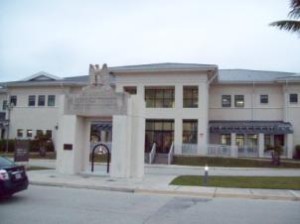Project Overview
Abraxas Energy Consulting conducted an energy assessment for Jacksonville Medical Center in Key West, Florida in July 2012. There are 2 building in the scope of this project at this facility: a 55,056 square foot branch health clinic and an adjacent 2,280 square foot energy building. The goal of the audit was to assist Jacksonville in identifying and developing energy investment initiatives that achieved the federally required energy reductions.
The Solution
The energy assessment was performed in two phases, a Preliminary Assessment (Phase 1) and a Scoping Energy Assessment (Phase 2). Phase 1 consisted of a utility bill audit which established a baseline for energy and water usage and facilities benchmarking using energy Star Portfolio Manager. Forty-eight months of bills for water and electricity were used to conduct the audit. This generated a baseline for the energy/water/gas usage and utility costs, which was used in calculating potential energy savings. The calculated Energy Star score for the clinic was 11 and the goal after implementation of conservation measures was to reach a score of 75. The calculated HDDs and CDDs provided insight to potential energy conservation measures.
The second phase used on-site visits with the purpose of identifying and quantifying cost-effective energy efficiency measures, water conservation practices and renewable energy measures. During the on-site inspection all the relevant information on the existing building conditions was collected. This on-site assessment included reviewing building and equipment data, interviewing site personnel, observing energy related equipment operation, and conducting some limited site measurements. Based on the inspection and calculations ten ECMs were recommended, as well as a list of administrative and operational measures that could be also implemented.
The Results
The largest opportunity for savings was found on replacing the backflow preventer that is continuously leaking. Other ECMs found were lighting upgrade and controls, addition of a timer for the DHW pump, replacement of sink aerators and installation of occupancy controllers to vending machines. Studies were also conducted into the feasibility of co-generation, renewable energy sources and retro-commissioning. These were preliminary assessments and based on the results, co-generation and renewable energy sources were not found to be cost effective. Regarding retro-commissioning, a targeted study on one AHU was recommended. The existing and proposed annual energy usage and cost for this project are shown below.
Benefits
When implemented, the ECMs (including retro-commissioning based on the feasibility study) will save over $56,171 per year with a simple payback of 1.8 years. The list of measures is prioritized by simple payback such that short term investments are expected to be implemented first and longer term investments implemented last. Some interactive effects are accounted for in the calculation of energy savings such that if a different implementation sequence is followed the savings realized will vary to a degree. Total savings for electricity is 252,316 kWh/yr and for water savings is 384 kGal/yr. Total energy savings results in a 11% reduction in energy intensity. All values were evaluated using bin simulations and spreadsheet calculations based upon standard energy savings estimating methods and known and assumed operating conditions. Various incentives were identified through utility companies and various federal programs.
